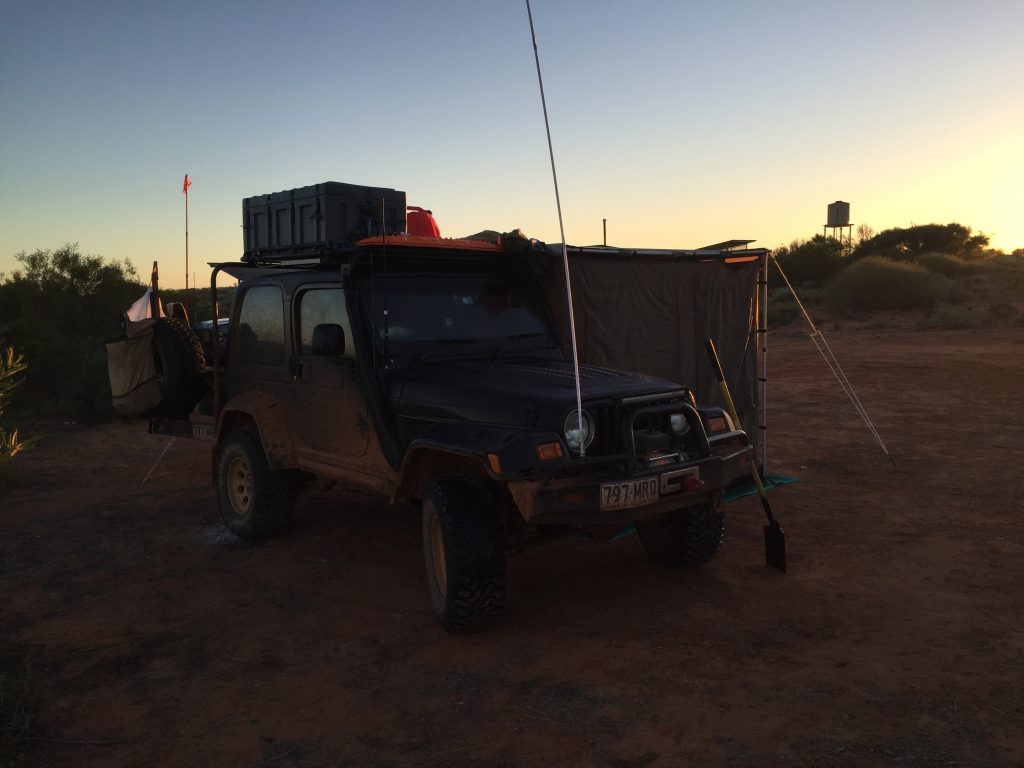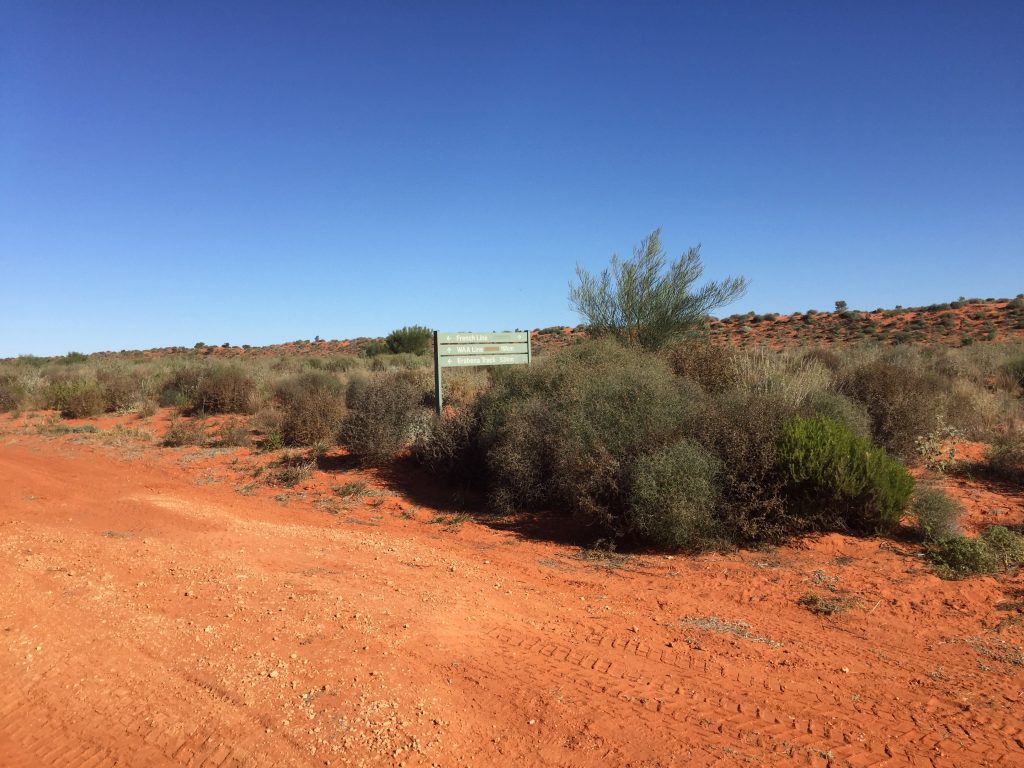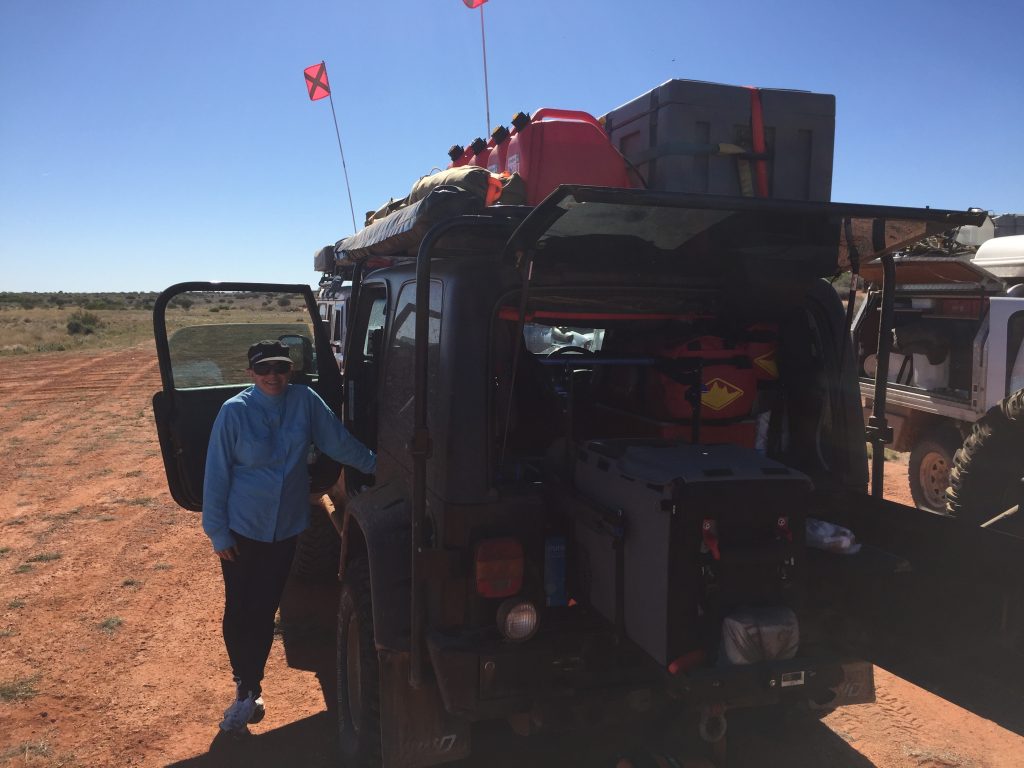Waking up at Purni Bore knowing that we were heading into the desert proper today meant that we made good use of the facilities. From here on in there won’t be any services other than what we have with us.
It’s a nice feeling, that sense of excitement mixed with trepidation. It’s a feeling that inspires people, including myself, to push hard in life to ensure we don’t miss out on these experiences. As much as it can be hard to plan, prepare and make time for journeys such as this one, it’s really all worth it in the end.
Any sense of trepidation was soon washed away as crossing the 1,100 odd sand dunes in one of the remotest places in the world is quite a bit less daunting than it sounds when you’re out here. The dunes start out fairly small when travelling from west to east, so you are kind of eased into the process quite nicely.
Having had some recent rain, the sand wasn’t all that soft for our journey so we floated along quite nicely without any real issues driving up the western, less steep side of the dunes. Travelling from east to west is often harder due to the prevailing wind direction building the dunes much steeper on that side.
Check out the video below for some of our dune cresting action, and by action, it’s really just a pleasant drive in the sand.
By the time noon had rolled around on the first day, we’d made our way a decent distance along the French Line. Check out the screen snap from our iPad with the HEMA Maps app.
You can glean a bit of info form these map snippets, specifically, how far we’d come since leaving Purni Bore, and also our current speed, 13km/h, and altitude of 80 meters. You can see out distance travelled in 4 hours on the map. Our position indicator is just under the E in FRENCH LINE, and we started at the yellow X at Purni Bore.
Lunch was held on the side of the track on one of the many swales that exist between the dunes. Sometimes when we stopped you wouldn’t see another vehicle, other times it seemed like the proverbial main street. The utter peace and quiet of this part of the world, along with the stunning beauty of this so-called ‘desert’ kept us in a constant flux of awe and disbelief.
Our lunch stop, just off the track. The panorama image below shows the French Line, with East on the right, and West on the left.
Camping in the swales was something I’d long been thinking about back to when we first started planning this journey. Finding yourself camped in the magnificent sand valleys, formed over millions of years is one of the unique pleasures of travelling the deserts of Australia, and particularly the Simpson Desert.
We had no trouble finding suitable campsites during our desert crossing. We spent 2 nights in the desert on the French Line crossing. Below are some snapshots for this leg of the journey.
Continuing onto Poeppel Corner brings us to the end of this particular leg. Poeppel Corner, of course, being the intersection of QLD, SA and NT, is smack bang on the edge of a salt flat which is easily crossed provided it hasn’t been raining. It was a walk in the park the day we were there although it was very, very busy.
While we were finding a park amongst the chaos, we came across a bloke who’d blown a turbo in his Prado and had been stuck with his family on a less travelled track until being discovered by another traveller. That same traveller was so nice as to offer to two this bloke and his broken trailer out of the desert. What a legend.
The Patrol that was the tow vehicle didn’t quite have enough grunt to pull the Prado over the dunes, which is fair enough, so the Prado had to fire up every now and then to provide what little power it had to assist. This had the effect of blowing oil out of the engine which constantly needed topping up. Some in our convoy loaned him some oil to help out, which was awesome and he was very appreciative. He didn’t end up needing it as we ran into him in Birdsville and he gave the oil back!
Next we tackle the QAA Line, Big Red and reach civilisation again at Birdsville.







Kent, still following with interest. Great to see your photos.
Tony k.